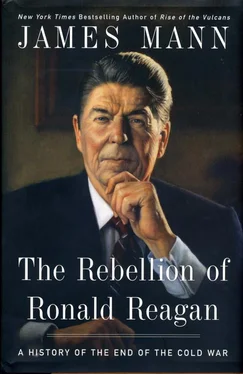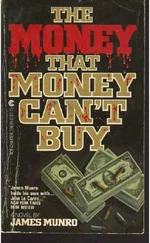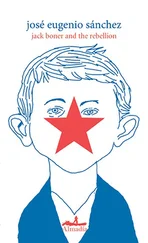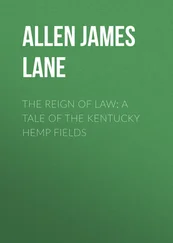Inside the Reagan administration itself, even some of the foreign-policy officials who were central to and especially admiring of the president’s overall diplomacy with the Soviet Union seem to have subscribed, at least implicitly, to the theater school’s interpretation. In his memoir of 1,138 pages, the most detailed account that exists of Reagan’s foreign policies, Secretary of State George Shultz did not mention the speech at all. Jack Matlock, who served first as Reagan’s Soviet adviser on the National Security Council and then as U.S. ambassador to Moscow, also took no note of the speech in his own book on Reagan and Gorbachev.
Yet the theater interpretation doesn’t hold up either. It fails to take account of Reagan’s role as political leader. As president, Reagan was responsible not merely for determining American foreign policy but for winning and maintaining public support for it. That task is what makes any president fundamentally different from his foreign-policy advisers; it is why Richard Nixon’s role in the American rapprochement with China was of greater weight than that of Henry Kissinger.
At the time of the Berlin Wall speech, Ronald Reagan was already under attack in the United States for having supposedly been taken in by Gorbachev. Conservatives were especially outraged. In September 1986, when the KGB had seized the American magazine correspondent Nicholas Daniloff in retaliation for the arrest of a Soviet agent in the United States, Reagan had negotiated an exchange rather than drawing a firm line. Separately, hawks in the national-security establishment were upset that at the Reykjavik summit in October 1986, Reagan had spoken of abolishing nuclear weapons.
And yet for Reagan, these events were merely prologue: there was considerably more business he wanted to conduct with Gorbachev. By the spring of 1987, he was well into negotiations for two more summits in Washington and Moscow. Even more important, his administration was moving toward a groundbreaking arms-control agreement with the Soviet Union: the Intermediate Nuclear Forces Treaty, which would eventually have to be ratified by the Senate. The idea of such a treaty was beginning to attract considerable opposition in Washington.
The Berlin Wall speech cut in precisely the reverse direction from the way it appeared. It was an anti-Communist speech that helped preserve support for a president seeking to upgrade American relations with the Soviet Union. It demonstrated to the American public that, even as he proceeded to do business with Gorbachev, Reagan had not been beguiled by the charismatic Soviet leader and had not altered his beliefs about the nature of the Soviet system. The Berlin Wall speech was, in a real sense, the political prerequisite for the president’s subsequent efforts to work with Gorbachev in easing the tensions of the Cold War.
This is not to suggest that Reagan’s speech was merely politics or a grand deception. It carried considerable substantive meaning as well. By demanding that Gorbachev “tear down this wall,” Reagan was setting forth what amounted to American terms, or at least ideas, for the end of the Cold War. At the time of the speech, it appeared that the Cold War atmosphere of the prior four decades was already giving way to something new. Gorbachev was searching for a new relationship with the United States. West and East Germany were moving toward each other.
The open question was where all of this would lead. The Berlin Wall speech served notice that the United States was willing to reach accommodations with Gorbachev, but not at the expense of accepting the permanent division of Berlin (or by extension, the permanent division of Germany or Europe). In this sense, the speech was directed to Europeans as well as Americans.
On the surface, the Berlin Wall speech seemed like the obvious successor to a series of earlier anti-Communist speeches by Reagan: the 1982 speech where he consigned Marxism-Leninism to “the ash heap of history” and the still more famous address of 1983 in which Reagan branded the Soviet Union “the evil empire.” The Berlin Wall speech was different, however, because it had to reckon with a new factor: the ascent of Gorbachev. While many in the United States were dismissing Gorbachev as merely a new face for the same old Soviet policies, Reagan and Shultz did not. It was for precisely this reason that Reagan’s Soviet policies were under attack.
Thus, while the Berlin Wall speech reaffirmed the anticommunism on which Reagan had based his entire political career, it also gave recognition to the idea that the Soviet system might be changing. “We hear much from Moscow about a new policy of reform and openness,” Reagan said in Berlin. “Some political prisoners have been released. Certain foreign news broadcasts are no longer being jammed…. Are these the beginnings of profound changes in the Soviet state?”
The speech did not attempt to answer that question. But it went on to establish a new test for evaluating Gorbachev and the new Soviet leadership:
There is one sign the Soviets can make that would be unmistakable, that would advance dramatically the cause of freedom and peace. General Secretary Gorbachev, if you seek peace, if you seek prosperity for the Soviet Union and Eastern Europe, if you seek liberalization: Come here to this gate!… Mr. Gorbachev, tear down this wall!
Reagan’s speech also offered Gorbachev the same thematic message that other Reagan administration officials, notably Shultz, had been conveying repeatedly in private meetings: it suggested that the way to make the Soviet Union more prosperous was to join the international system and to break down the barriers that divided the Soviet Union and its Eastern European allies from the rest of the world. The Soviet leader needed to tear down walls if he wanted to revive his country’s economy.
The Berlin Wall speech was the product of a torturous process within the Reagan administration. The drafting of the speech, and Reagan’s decision to deliver it, reflected the swirling dynamics of the final years of the Cold War, both overseas and in Washington. It was, indeed, a remarkable story.
-2-
TWENTY-FIFTH ANNIVERSARY
On August 13, 1986, West and East Berlin commemorated separately and in different ways the twenty-fifth anniversary of the epochal day when East German security officials had suddenly put up barbed wire, dividing the city. The initial barriers, constructed overnight on August 12-13, 1961, had quickly been replaced by the concrete structure with accompanying watchtower and floodlights known as the Berlin Wall. A quarter century later, the wall remained the enduring symbol of the Cold War, a barrier nearly thirty miles long that split up neighborhoods, separated families, and prevented the residents of East Berlin from fleeing to the West, as they had been seeking to do in ever-increasing numbers.
In East Berlin, the twenty-fifth anniversary was marked by a military parade. Large formations of troops and armored cars moved slowly up the wide, spacious boulevard called the Karl-Marx-Allee. East Germany’s Communist Party general secretary Erich Honecker (who in 1961, as the top security aide to the preceding East Germany leader, Walter Ulbricht, had personally overseen construction of the wall) stood on a grandstand alongside other Communist Party and military officials. A giant banner on the grandstand proclaimed “25 Years of an Anti-Fascist Defense Wall.” Posters on nearby streets displayed a picture of a uniformed, helmeted East German solider with the words, “Aug. 13, 1961-86: An example for the workplace and the armed forces.”
In West Berlin, German chancellor Helmut Kohl, in ceremonies at the German Reichstag (parliament building), proclaimed that “we will never and can never get used to this monument of inhumanity.” The Berlin Wall, Kohl continued, “is perhaps the most visible expression of the moral gulf between free democracy and totalitarian dictatorship.” 1There were a handful of small popular protests by West Germans at the wall. In one, at Checkpoint Charlie, a crossing point between East and West Berlin, about three hundred people gathered at night, in some instances lunging across the border for a few brief moments before they were thrown back by East German security officials or prudently leaped back on their own. A couple of protesters threw stones at the East German guards. The Soviet ambassador to East Germany, Yuli Kvitsinsky, subsequently filed a formal protest to Allied authorities in West Berlin, calling the demonstrations “a wide-ranging provocative campaign.”
Читать дальше












